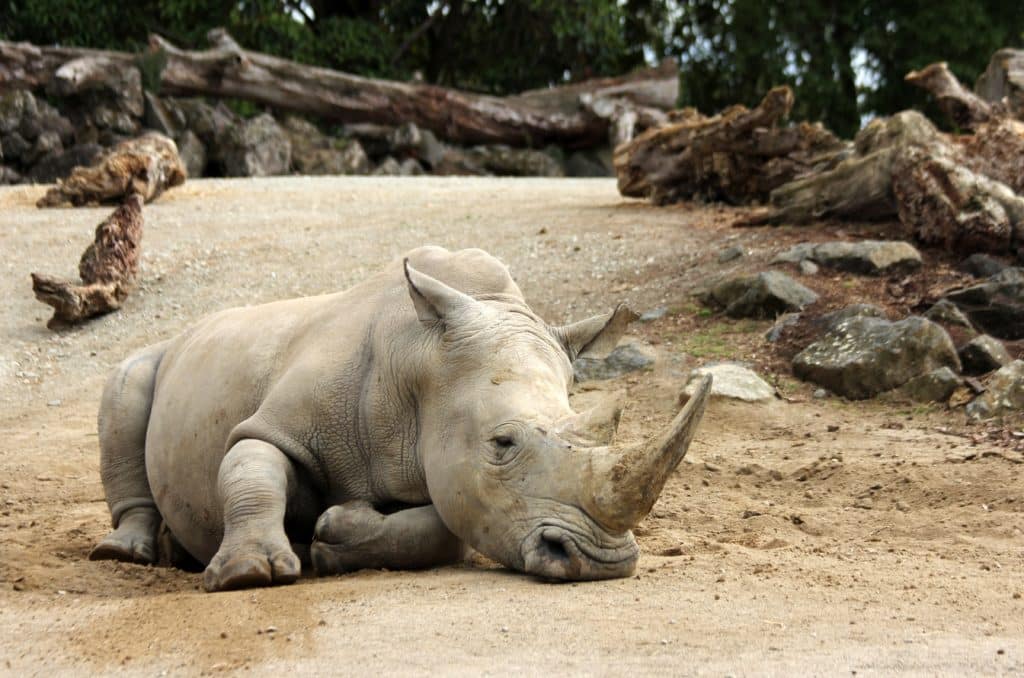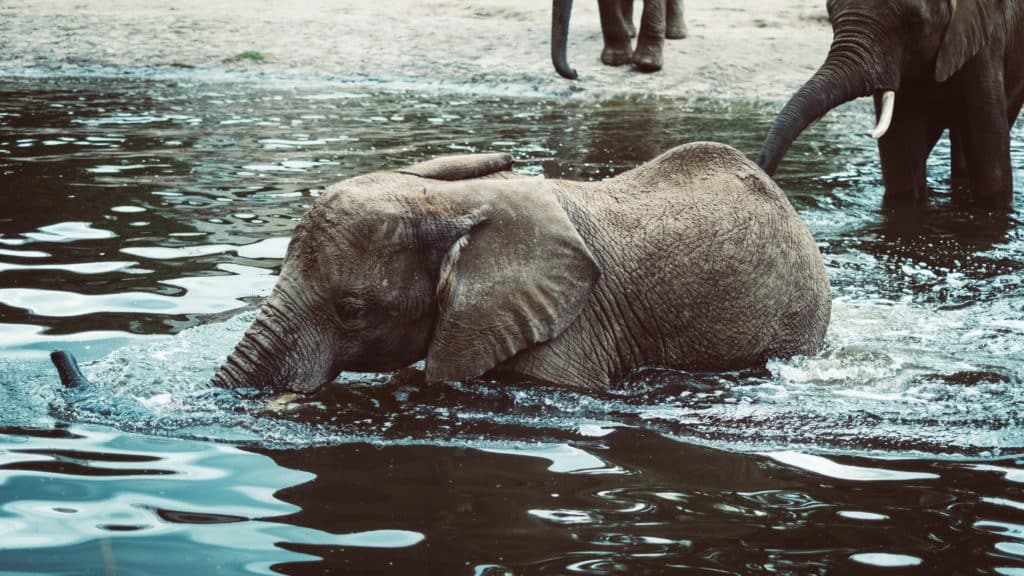The practice of holding live animals in “zoos” dates back to ancient human civilization as far back as 2500 BCE. Wall carvings in Mesopotamia show evidence of menageries owned by the highest ranks of society. Early zoos served as symbols of wealth and status, where owners severely mistreated animals for entertainment.
The concept of modern zoo came about thousands of years later during the Englightenment. A new focus on science stretched to the field of zoology. Scientists wanted to perform research without having to travel thousands of miles to animal’s natural habitats. Instead, they could create artificial habitats making their study more accessible.
In 1793, the first modern zoo was created after the French Revolution. Animals from the menagerie of the royal family and aristocracy were rounded up and placed in the Ménagerie du Jardin des Plantes, which is still a zoo in Paris today.
Early zoos were cramped and dangerous for the animals. Views on animals were very different during this period, causing zookeepers to create more of a museum environment with multiple animals stuffed in tiny displays.
Now, zoos have taken many steps away from the cruelty of our past. Animals now are kept in larger enclosures meant to mimic their natural environment closely. Though zoos entertain us with the animals, they also educate the public and conserve endangered species.
Though they’ve certainly improved, zoos still can be cruel and harmful to animals. It is essential to consider the pros and cons of zoos through the lens of our modern era.

What Are the Pros of Having Zoos?
1. Zoos are excellent educational resources.
Zoos play a central role in modern animal education, particularly in non-diverse ecological areas. Where else will children and families experience seeing animals in person and learning from expert zoologists. Many zoos also have programs where staff will guest teach at local schools, schools can hold specialized field trips, or community groups can put on educational events. Because zoos are not usually profit-driven, they also provide equal access to all socioeconomic groups.
2. Zoos are economic resources for communities.
Zoos are critical economic resources for communities small and large around the world. They employ hundreds of people and bring in large amounts of revenue. The US alone employs 38,000 people at zoos. As of 2013, the economic output of zoos topped $17.2 billion.
3. A zoo protects endangered animals from extinction.
Earth is in the midst of a massive extinction event due to human activity. The background rate of extinction (natural frequency at which species go extinct on earth) is 1,000 times what it is typically. Because we aren’t changing our habits any time soon, zoos are one of the only options to prevent many species from going extinct. Zoos and wildlife reserves prevent poachers from slaughtering animals. They also provide safe locations to breed new generations of animals to later release into the wild. Puerto Rican Parrots, Golden Lion Tamarin, and Freshwater Mussels were all saved from extinction by zoos.
4. Modern zookeepers are experts in their field.
At one time, the most significant criticism of zoos was the quality of the caretakers. Today, zookeepers are high trained and knowledgeable about the animals they treat. Most zookeeping positions require a bachelor’s degree in biology or zoology at a minimum. Better training results in fewer cases of animal abuse and human deaths, which is the trend we’ve seen over the last few decades.
5. Many zoos are accredited.
In 1971, the American Associate of Zoos & Aquariums responded to concern that animals were being mistreated by creating a committee to set zoo best practices. In 1974 the first zoo was accredited by the AZA. By the 1980s, the AZA made a bold decision to require all zoos to become accredited to retain their membership. Three-quarters of zoos dropped out of the organization, but forty years later, accreditation is a must for major zoos in the United States. Similar organizations like the BIAZA in the UK, ZAA in Australia, and CAZA in Canda maintain comparable standards. Accredited zoos are regularly inspected to meet minimum standards and could lose their animals if they fail to pass inspections consistently.
6. Zoo habitats mimic natural settings.
Early zoos like the Ménagerie du Jardin des Plantes kept animals in tiny enclosures with maybe a few toys. As a result, zoo animals lived a horrible life that usually ended in an early death. As time went by, zoos realized the importance of providing a habitat similar to where they originated. They monitor diets to ensure they’re as healthy as possible and perform activities mimicking the wild, alleviating boredom and keeping them mentally sharp. None of this replaces the benefits of being in their own environment, but it goes a long way to keep animals happy and healthy.
7. Zoos staff veterinarians and have specialized areas for treatment.
Zoos maintain on-site medical facilities to provide treatment for their animals. Custom facilities are particularly necessary for animals like giraffes and elephants, which would be impossible to transport and treat elsewhere. When animals experience health issues, they can be with a vet within minutes. Veterinarians are no longer working alone, either. Techs, pathologists, and other experts support veterinarians allowing treatment of the rarest diseases.
8. Zoos partner with universities to improve higher education.
Zoos offer unique opportunities for universities to study animals firsthand. One example is a partnership between the Oakland Zoo and Sonoma State University in California. As a result of collaborative research, they developed smart feeders that significantly improve the quality of their lives. The Smithsonian National Zoo is another significant example. They’ve partnered with multiple universities on masters and doctorate programs.
What Are the Cons of Having Zoos?
1. Holding animals in captivity creates an ethical dilemma.
Keeping animals in captivity creates an ethical issue. Even if zoos treat animals well, they still deprive animals of their natural environment against their will. No matter how hard we try, zoos will never be able to mimic the social structures and environments where animals thrive. If there’s no conservation involved, then all zoos are doing is depriving animals of their homes for profit.
2. Breeding programs aren’t necessarily useful when releasing into the wild.
Adapting to living in zoos is easy for most animals, especially since food at regular intervals. They will even breed and have their children. The issue is its almost impossible to release their offspring back into the wild. Without growing up outside of the zoo, they will become dependent on regular feeding times. When released into the wild, they would starve or be killed by predators within days.
3. Zoos are created for recreation first, conservation second.
It would be one thing if zoos were created primarily for animal conservation. That would ensure that our reasoning for holding them in captivity is only altruistic. Instead, they’re designed as entertainment centers to drive revenue from the cities. Their existence is undoubtedly in an ethical grey area because of this.
4. Visitors don’t necessarily respect the animals.
Since zoos are open to the public, they often run into issues with visitors. Some don’t follow the rules, and cross boundaries meant to keep them safe from animals. They may torment them through glass or throw things through their cages. In the most extreme case, they can get themselves or the animals killed. One extreme example was a 3-year old boy falling in a gorilla enclosure at the Cincinnati zoo in 2016. Authorities shot a gorilla named Harambe to save the boy’s life.
5. Captivity changes an animal’s behavior over time.
We don’t always know the effect of captivity on an animals health or behavior over time. Elephants, for example, see significant negative repercussions from being enclosed for an extended period. Because they’re migratory, herd animals elephants in captivity tend to be more aggressive than in the wild. Zoos euthanize Elephants regularly for harming trainers or other elephants well before their average life expectancy of 70. Many suffer from obesity and other health problems because they don’t exercise enough.

6. Many zoos are financially struggling.
The Brookfield Zoo in Chicago closed a wing of the zoo after a 1.3 million dollar revenue shortfall. The Bronx Zoo had a 4.7 million dollar budget reduction recently. These are a few of many zoos that are struggling financially. The problem is that these losses affect how well they take care of animals. Zoos euthanize healthy animals that they can’t find a new home or transfer them to subpar locations. In Agate, CO, for example, a wildlife sanctuary killed eleven animals when it closed from flooding.
7. Many zoos are conservationists in name only.
Unfortunately, many zoos take advantage of the great press they receive for being conservationists. In reality, zoos are a business, and the welfare of the animals is secondary to profits. An estimated 3% of the budgets of all of the AZA-accredited zoos in the United States goes towards conservation efforts. This lack of commitment shows in the results. In the 20th century, only 16 of 145 reintroduction efforts returned animals successfully to the wild.
8. It is impossible to recreate many animal’s natural habitats.
Even with the best intentions, it is challenging to recreate natural habitats accurately. Elephants are a great example of this. In the wild, elephant herds consist of 8 – 100 individuals and walk over 30 miles every day. Zoos do not have space to recreate this. Aquariums run into this same issue. Migratory animals like Orcas swim up to 140 miles per day. It would take 4,280 laps to swim that distance in a typical tank at SeaWorld.
- Tulip Mania – The Story of One of History’s Worst Financial Bubbles - May 15, 2022
- The True Story of Rapunzel - February 22, 2022
- The Blue Fugates: A Kentucky Family Born with Blue Skin - August 17, 2021